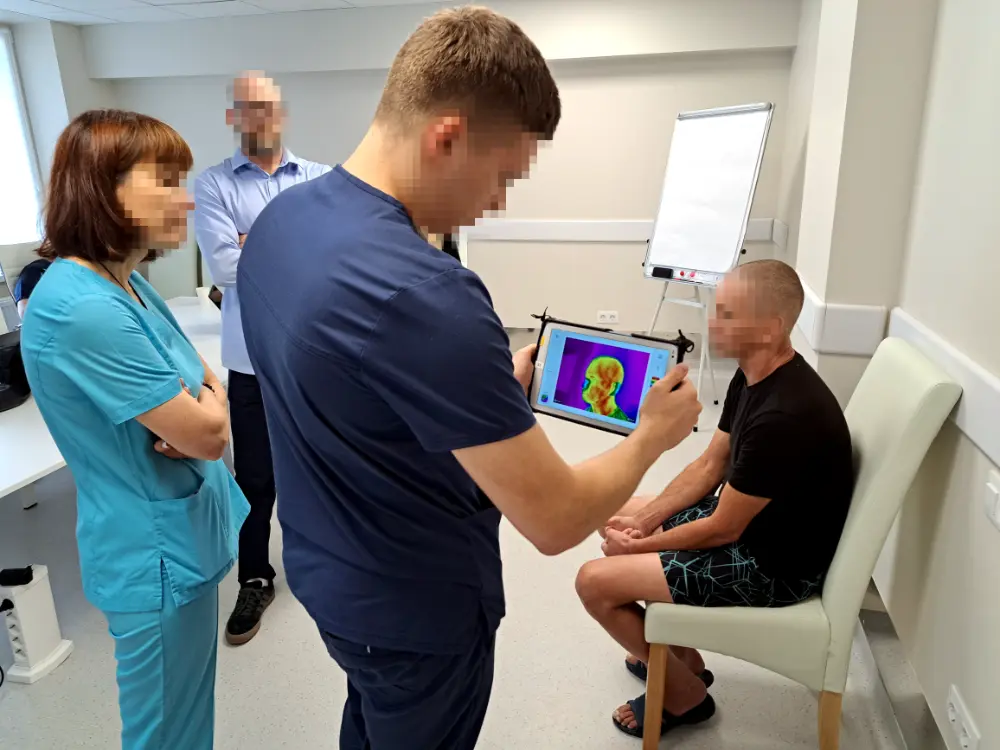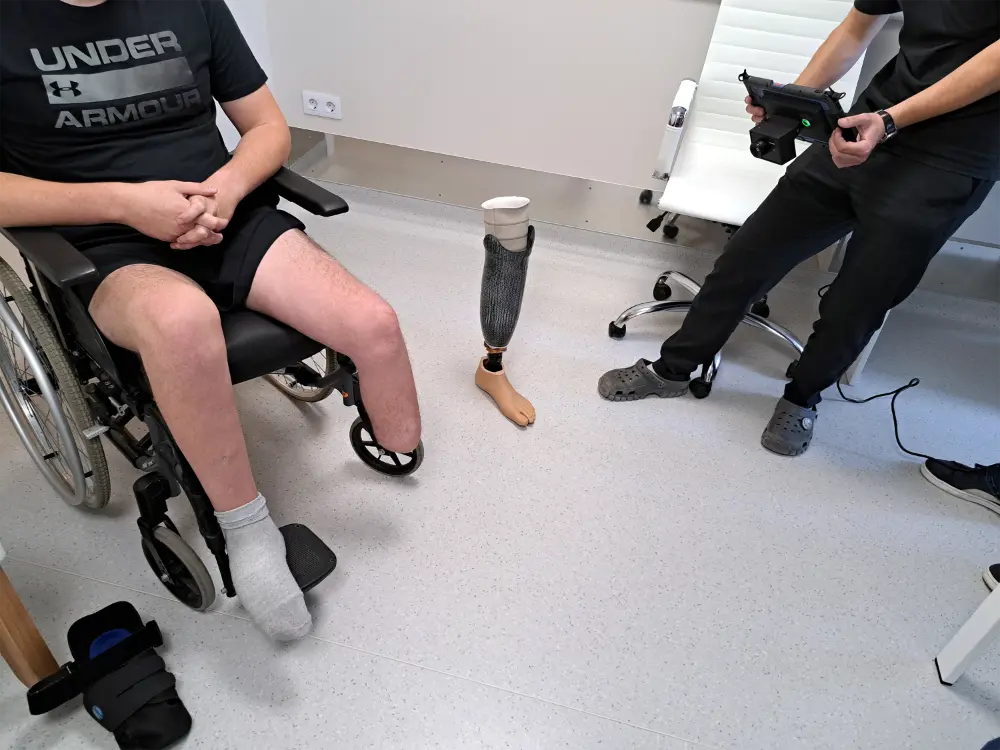The Superhumans Center in Ukraine treats around 3,000 patients a year who are injured in war and on the streets. Patients come to the Superhumans Center for rehabilitation after receiving hospital care following their injuries.
Surgeons at the center had already used thermal imaging in the past, but low-resolution cameras without proper software were inadequate for challenging conditions.
The long-planned collaboration got underway at the end of July, when Rami Luttinen from Thermidas visited Lviv together with surgeon Tommi Auvinen. The duo spent two days at the Superhumans Center to train staff and help introduce a new, and better thermal imaging solution.

“They were already using thermal imaging, so both doctors and prosthetists immediately understood the benefits of a higher-quality system”, says Luttinen.
Patients usually spend between a week and a month and a half at the center. During that period, they undergo plastic surgery and are fitted with prostheses, when needed. The rehabilitation period allows the staff to monitor the progress as patients are learning to use their new prosthetics.
“Thermal imaging can help pinpoint potential problems in the stump, saving time and reducing the need for re-fitting.”
In crisis rehabilitation, speed, ease-of-use and cost-effectiveness are key factors in choosing the right tools.

With the help of thermal imaging, plastic surgeons can identify the appropriate site for skin grafting and monitor the progress of the healing process. Prosthetists, on the other hand, use thermal imaging to assess the suitability of the prosthesis and the potential problems that may arise with use.
Thermography can for example support clinical decision-making for adjusting the socket design and localizing inflammatory areas. (1)
The Superhumans Center staff received comprehensive training on the new system and deepened their knowledge of how to use the method effectively.
Thermidas will continue to support the Superhumans Center, helping with the analysis of thermal images. A new trip to Lviv is already being planned and, in the meanwhile, remote calls have been scheduled to answer any questions that may arise.
“The staff at Superhumans Center has been able to integrate thermal imaging as a daily tool to support their important, medical work”, Luttinen concludes.
(1) Cutti AG, Perego P, Fusca MC, Sacchetti R, Andreoni G. Assessment of lower limb prosthesis through wearable sensors and thermography. Sensors (Basel). 2014 Mar 11;14(3):5041-55. doi: 10.3390/s140305041. PMID: 24618782; PMCID: PMC4003980.